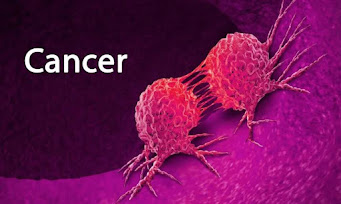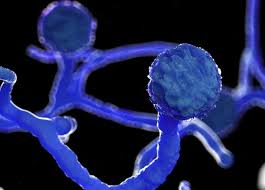WHAT IS CANCER?| HOW IT CAN BE DETECTED ?|TYPES| PREVENTION|
Cancer is one of the most dreaded disease of Human Beings and is a major cause of death all over the globe. More than a million Indian suffer from cancer and large number of them die from it annually. The mechanism that underlie development of cancer or oncogenic transformation of cells, it's treatment and control have been some of the most intense areas of research in biology and medicine.
HOW THE INFECTION PROCEED IN OUR BODY?
In our body, cell growth and differentiation is highly controlled and regulated. In cancer cell, there is breakdown of these regulatory mechanism. Normal cells show a property called contact inhibition by virtue of which other cells inhibits their uncontrolled growth. cancer cells appears to lost this property. As a result of this, Cancerous cells just continue to divide giving rise to mass of cells called tumors. Our Health is of prime consideration.
TYPES OF CANCER
There are more than 200 kinds of malignancy; unreasonably various to remember for this starting article. Be that as it may, the NCI records a few general classifications (see list in first part of this article). This rundown is extended beneath to list more explicit kinds of tumors found in each broad class; it's anything but comprehensive and the malignant growths recorded in cites are the overall names of certain diseases:
Carcinoma: Cancer that starts in the skin or in tissues that line or cover inner organs - "skin, lung, colon, pancreatic, ovarian malignant growths," epithelial, squamous and basal cell carcinomas, melanomas, papillomas, and adenomas
Sarcoma: Cancer that starts in bone, ligament, fat, muscle, veins, or other connective or steady tissue - "bone, delicate tissue malignant growths," osteosarcoma, synovial sarcoma, liposarcoma, angiosarcoma, rhabdosarcoma, and fibrosarcoma
Leukemia: Cancer that beginnings in blood-framing tissue, for example, the bone marrow and makes huge quantities of unusual platelets be delivered and enter the blood - "leukemia," lymphoblastic leukemias (ALL and CLL), myelogenous leukemias (AML and CML), T-cell leukemia, and bushy cell leukemia
Lymphoma and myeloma: Cancers that start in the cells of the safe framework - "lymphoma," T-cell lymphomas, B-cell lymphomas, Hodgkin lymphomas, non-Hodgkin lymphoma, and lymphoproliferative lymphomas
Focal sensory system malignant growths: Cancers that start in the tissues of the cerebrum and spinal rope - "mind and spinal rope tumors," gliomas, meningiomas, pituitary adenomas, vestibular schwannomas, essential CNS lymphomas, and crude neuroectodermal tumors
Excluded from the above kinds recorded are metastatic malignancies; this is on the grounds that metastatic disease cells for the most part emerge from a cell type recorded above and the significant distinction from the above sorts is that these cells are currently present in a tissue from which the malignancy cells didn't initially create. Therefore, if the expressions "metastatic malignancy" is utilized, for exactness, the tissue from which the disease cells emerged ought to be incorporated. For instance, a patient may say they have or are determined to have "metastatic disease" however the more exact explanation is "metastatic (bosom, lung, colon, or other sort) malignant growth with spread to the organ in which it has been discovered." Another model is the accompanying: A specialist portraying a man whose prostate disease has spread to his bones should say the man has metastatic prostate malignancy to bone. This isn't "bone malignancy," which would be disease that began in the bone cells. Metastatic prostate malignancy to bone is dealt with uniquely in contrast to cellular breakdown in the lungs to bone.
TYPES OF TUMORS ?
Tumors are of two types that is benign and malignant.
BENIGN tumor normally remain confined to the original position and do not spread to other parts of body and cause little damage.
MALIGNANT tumor on the other hand are the mass of proliferating cells called neoplastic or tumor cells. these cells grow very rapidly, invading and damaging the surrounding normal tissues and cells. as these cells actively divide and grow, they starve the nutrition of normal surrounding cells.
CAUSES OF CANCER?
Smoking
Tobacco or tobacco smoke contains at any rate 66 known expected cancer-causing synthetic substances and poisons.
Anything that may make an ordinary body cell grow unusually possibly can cause malignant growth. Numerous things can cause cell anomalies and have been connected to malignant growth improvement. Some malignancy causes stay obscure while different tumors have natural or way of life triggers or may create from more than one known reason. Some might be formatively impacted by an individual's hereditary cosmetics. Numerous patients foster malignant growth because of a blend of these components. Despite the fact that it is normal troublesome or difficult to decide the starting event(s) that cause disease to create in a particular individual, research has given clinicians various likely causes that by itself or working together with different causes, are the probable contender for starting malignancy. Coming up next is a posting of significant causes and isn't comprehensive as explicit causes are regularly added as examination progresses:
Synthetic or poisonous compound openings:
Benzene, asbestos, nickel, cadmium, vinyl chloride, benzidine, N-nitrosamines, tobacco or tobacco smoke (contains in any event 66 known expected cancer-causing synthetic substances and poisons), asbestos, and aflatoxin
Ionizing radiation:
Uranium, radon, bright beams from daylight, radiation from alpha, beta, gamma, and X-beam discharging sources
Microbes:
Human papillomavirus (HPV), EBV or Epstein-Barr infection, hepatitis infections B and C, Kaposi's sarcoma-related herpes infection (KSHV), Merkel cell polyomavirus, Schistosoma spp., and Helicobacter pylori; different microorganisms are being investigated as potential specialists.
Hereditary qualities:
various explicit tumors have been connected to human qualities and are as per the following: bosom, ovarian, colorectal, prostate, skin, and melanoma; the particular qualities and different subtleties are past the extent of this overall article so the peruser is alluded to the National Cancer Institute for additional insights concerning hereditary qualities and disease.
Point out that most everybody has hazard factors for disease and is presented to malignancy causing substances (for instance, daylight, auxiliary tobacco smoke, and X-beams) during their lifetime, however numerous people don't foster disease. Also, numerous individuals have qualities that are connected to malignant growth however don't foster it.
Why? Despite the fact that scientists will be unable to offer an acceptable response for each person, unmistakably the higher the sum or level of malignant growth causing materials an individual is presented to, the higher the possibility the individual will foster disease. Likewise, individuals with hereditary connections to malignant growth may not foster it for comparative reasons (absence of enough upgrade to make the qualities work). Likewise, a few group may have an increased safe reaction that controls or wipes out cells that are or conceivably may become malignant growth cells. There is proof that even certain dietary ways of life may assume a critical part related to the resistant framework to permit or forestall disease cell endurance. Thus, it is hard to allocate a particular reason for malignant growth to numerous people.
As of late, other danger factors have been added to the rundown of things that may build malignant growth hazard. In particular, red meat (like hamburger, sheep, and pork) was grouped by the International Agency for Research on Cancer as a high-hazard specialist for conceivably causing diseases; furthermore handled meats (salted, smoked, saved, and additionally relieved meats) were set on the cancer-causing list. People that eat a great deal of grilled meat may likewise build hazard because of mixtures shaped at high temperatures. Other less characterized circumstances that may build the danger of specific malignant growths incorporate heftiness, absence of activity, persistent aggravation, and chemicals, particularly those chemicals utilized for substitution treatment. Different things, for example, PDAs have been intensely contemplated. In 2011, the World Health Organization grouped PDA low energy radiation as "perhaps cancer-causing," however this is an extremely generally safe level that puts PDAs at similar danger as caffeine and salted vegetables.
Demonstrating that a substance doesn't cause or isn't identified with expanded malignancy hazard is troublesome. For instance, antiperspirants are considered to conceivably be identified with bosom malignancy by certain specialists and not by others. The authority position by the NCI is "extra examination is expected to explore this relationship and different components that might be included." This uninspiring end is introduced in light of the fact that the information gathered so far is conflicting. Different cases that are comparative require serious and costly exploration that may never be finished. Sensible counsel may be to stay away from a lot of any mixtures even distantly connected to disease, despite the fact that it very well might be hard to do in complex, mechanically progressed present day society.
Transformation of normal cells into cancerous neoplastic cells may be induced by either chemical, physical or biological agents. these agents are called carcinogen.
The chemical carcinogen present in tobacco smoke have been identified as major cause of lung cancer.
Ionising radiation like X rays and gamma rays and non ionising radiation like UV cause DNA damage leading to neoplastic transformation of cells.
HOW CANCER CAN BE DETECTED?
Most cancer are at first perceived either in view of the presence of signs or manifestations or through screening. Neither of these prompts a conclusive analysis, which requires the assessment of a tissue test by a pathologist. Individuals with suspected malignant growth are explored with clinical trials. These regularly incorporate blood tests, X-beams, (contrast) CT sweeps and endoscopy.
Early detection of cancer is essential as it allows the disease to be treated successfully in many cases. Following techniques through which it can be detected are as follows-
BIOPSY :- In Biopsy, a piece of the suspected tissue cut into thin sections in stained and examined under microscope by a pathologist.
computed tomography uses X rays to generate a three dimensional image of the internal of an object.
Magnetic resonance imaging uses strong magnetic field and non ionising radiation to accurately detect pathological and physiological changes in the living tissue.
Antibodies against cancer specific antigen are also used for detection of certain cancers.
Polymerase chain reaction is used to detect gene in individuals with inherited susceptibility to certain cancer.
A few diseases are analyzed during routine screening assessments. These typically test that is regularly done at a particular age. Numerous diseases are found when you present to your medical care proficient with explicit indications.
An actual test and clinical history, particularly the historical backdrop of indications, are the initial phases in diagnosing malignant growth. In numerous cases, the clinical guardian will arrange a few tests, the majority of which will be controlled by the kind of malignant growth and where it is suspected to be situated in or on the individual's body. Likewise, most guardians will arrange a total blood check, electrolyte levels, and, now and again, other blood examines that may give extra data.
Imaging examines are usually used to assist doctors with distinguishing anomalies in the body that might be disease. X-beams, CT and MRI outputs, and ultrasound are normal devices used to inspect the body. Different tests like endoscopy, which with varieties in the gear utilized, can permit perception of tissues in the intestinal plot, throat, and bronchi that might be destructive. In regions that can't be very much envisioned (inside bones or some lymph hubs, for instance), radionuclide checking is regularly utilized. The test includes ingestion or IV infusion of a pitifully radioactive substance that can be amassed and distinguished in the strange tissue.
The former tests can be truly adept at restricting anomalies in the body; numerous clinicians think about that as some of the tests give possible proof to the finding of malignancy. Notwithstanding, in for all intents and purposes all patients, the complete analysis of disease depends on the assessment of a tissue test taken in a strategy considered a biopsy from the tissue that might be destructive and afterward investigated by a pathologist. Some biopsy tests are generally easy to get (for instance, a skin biopsy or intestinal tissue biopsy finished with a gadget called an endoscope outfitted with a biopsy connection). Different biopsies may need as little as a painstakingly directed needle, or as much as a medical procedure (for instance, mind tissue or lymph hub biopsy). In certain cases, the medical procedure to analyze disease may bring about a fix if the entirety of the dangerous tissue is taken out at the hour of biopsy.
The biopsy can give more than the conclusive analysis of malignant growth; it can distinguish the disease type (for instance, the kind of tissue found may demonstrate that the example is from an essential [started here] or metastatic sort of cerebrum disease [spread from another essential tumor emerging somewhere else in the body] and accordingly help to arrange disease. The stage, or malignant growth arranging, is a route for clinicians and scientists to gauge how broad the disease is in the patient's body.
Is malignancy that has been found confined to its site of beginning, or is it spread from that site to different tissues? Confined disease is supposed to be at a beginning phase, while one which has spread is at a high level stage. The accompanying segment portrays the overall arranging strategies for malignancies.
TREATMENT OF CANCER
The common approaches for treatment of cancer are surgery, radiation therapy and immunotherapy.
In Radiotherapy tumor cells are irradiated lethally, taking proper care of normal tissues surrounding the tumor cells Most of the cancers are treated by the combination of surgery, radiotherapy and chemotherapy.
Tumor cells have been shown to avoid detection and destruction by immune system. Therefore, the patients are Given substance called biological response modifier such as alpha-interferon. It helps to destroy the tumor.
PREVENTION FROM CANCER
Disease anticipation is characterized as dynamic measures to diminish malignant growth risk. by far most of cancer cases are because of natural danger factors. A considerable lot of these ecological components are controllable way of life decisions. Accordingly, malignant growth is for the most part preventable. Between 70% and 90% of basic diseases are because of ecological variables and in this way possibly preventable.
More prominent than 30% of malignancy passings could be forestalled by staying away from hazard factors including: tobacco, overabundance weight/stoutness, less than stellar eating routine, actual dormancy, liquor, explicitly communicated diseases and air pollution. Not all ecological causes are controllable, like normally happening foundation radiation and tumors caused through inherited hereditary problems and consequently are not preventable by means of individual conduct.
Follow me on instagram for latest update
id - mahadev_follower430







